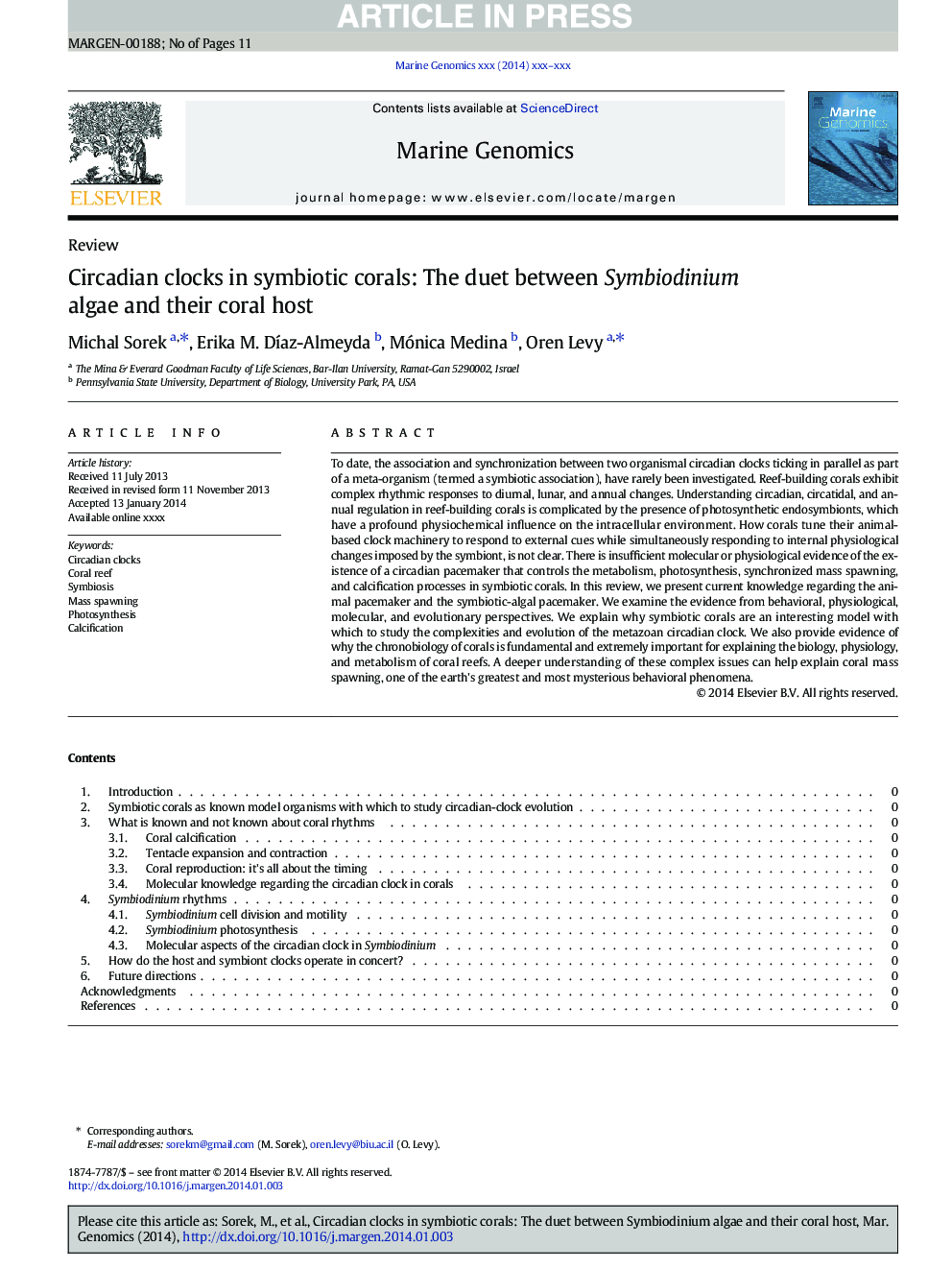| Article ID | Journal | Published Year | Pages | File Type |
|---|---|---|---|---|
| 8388683 | Marine Genomics | 2014 | 11 Pages |
Abstract
To date, the association and synchronization between two organismal circadian clocks ticking in parallel as part of a meta-organism (termed a symbiotic association), have rarely been investigated. Reef-building corals exhibit complex rhythmic responses to diurnal, lunar, and annual changes. Understanding circadian, circatidal, and annual regulation in reef-building corals is complicated by the presence of photosynthetic endosymbionts, which have a profound physiochemical influence on the intracellular environment. How corals tune their animal-based clock machinery to respond to external cues while simultaneously responding to internal physiological changes imposed by the symbiont, is not clear. There is insufficient molecular or physiological evidence of the existence of a circadian pacemaker that controls the metabolism, photosynthesis, synchronized mass spawning, and calcification processes in symbiotic corals. In this review, we present current knowledge regarding the animal pacemaker and the symbiotic-algal pacemaker. We examine the evidence from behavioral, physiological, molecular, and evolutionary perspectives. We explain why symbiotic corals are an interesting model with which to study the complexities and evolution of the metazoan circadian clock. We also provide evidence of why the chronobiology of corals is fundamental and extremely important for explaining the biology, physiology, and metabolism of coral reefs. A deeper understanding of these complex issues can help explain coral mass spawning, one of the earth's greatest and most mysterious behavioral phenomena.
Related Topics
Physical Sciences and Engineering
Earth and Planetary Sciences
Earth and Planetary Sciences (General)
Authors
Michal Sorek, Erika M. DÃaz-Almeyda, Mónica Medina, Oren Levy,
